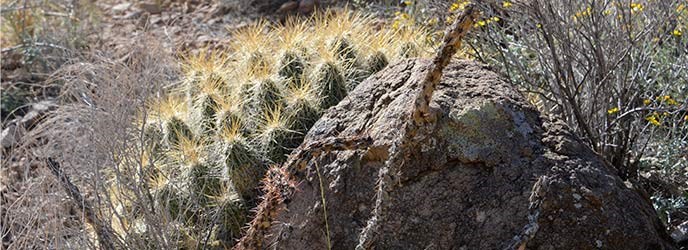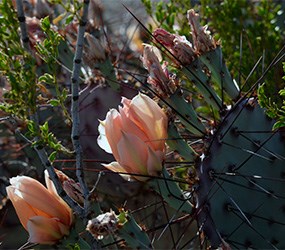
NPS Photo/Cookie Ballou Cacti have stems, pads, or branches that form as ribs or knobs. These swell and contract, accordion style, as water is stored or lost. A cactus's thick fleshy outer "skin" is glazed with a waxy layer that efficiently protects the plant against both moisture loss and the sun's radiant heat. Leaves (lost through evolution) have been replaced by spine clusters, which form within defined areas called areoles. The areole, often raised on a fleshy knob called a tubercle, is a feature unique to the cactus family. This is an opening on the epidermis of the cactus where spines emerge and gas exchange occurs with the environment. Some species, including prickly pears and chollas, also possess abundant glochids, or barbed hairs, that are located at the center of the spine clusters. Tiny glochids often appear fuzzy and soft, but are prickly sharp. The flowers of cactus species vary in size and color but are actually quite similar in structure. Many species have huge, eye-catching blossoms ranging in color from sunny yellow and flamboyant red-orange to rich magenta. They all have an outer ring of showy tepals (combined sepals and petals), a mass of numerous pollen-producing stamens, and a single pistil in the center. Once pollinated, the pistil grows to become the cactus fruit. The fleshy fruits are called "tunas" on prickly pears, and edible "pitayas" on some members of the hedgehog cactus clan. In most years, April is the best month to see many of the cactus species in bloom.
NPS Photo/Cookie Ballou Prickly Pear and Cholla |
Last updated: February 24, 2015
